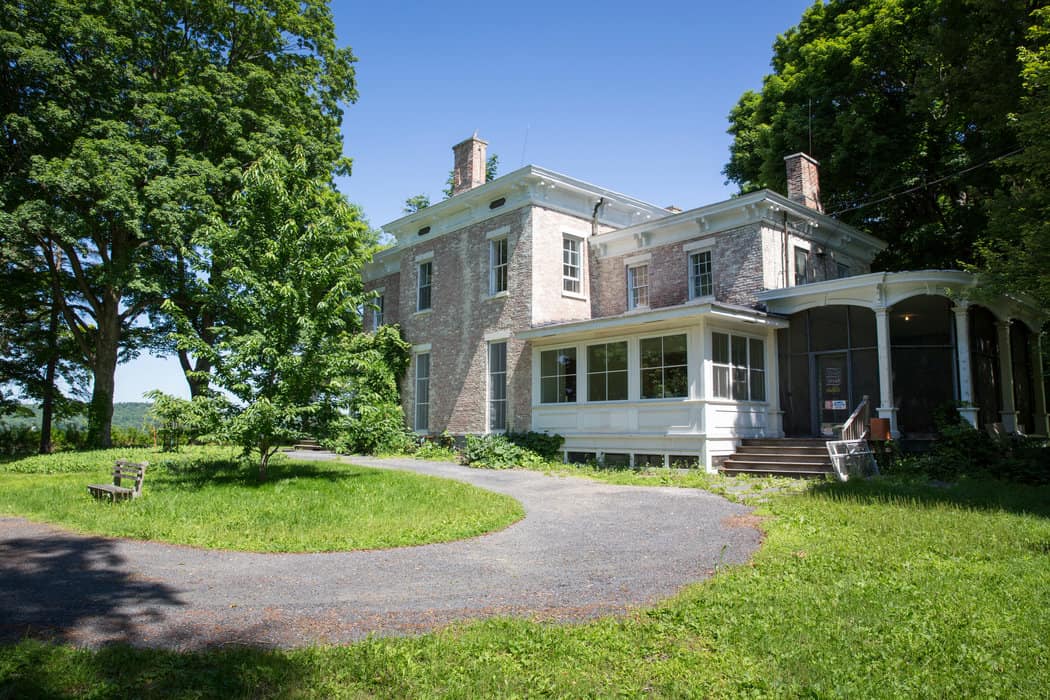The Appraisal
By Matt A.V. Chaban | JULY 6, 2015
STUYVESANT, N.Y. — It started with Hurricane Katrina: the flooded houses in New Orleans festering with mold, many uninhabitable to this day. Then came the earthquake in Haiti: thousands dead, crushed by homes that should have been their sanctuaries.
James Savage, then a Wall Street analyst living on Central Park West, grew disturbed about the conditions he saw on television and in the newspapers.
“There has to be something better we can do than this,” he recalled thinking last week as he sat at the kitchen table inside his new home here on a cliff overlooking the Hudson River 120 miles north of New York City.
The solution he has come up with is not some space-age polymer or recycled composite but a material that has been in use for millenniums, though it is more often demonized than venerated on these shores.
“Who knew hemp would be the answer to what we were looking for?” said Mr. Savage, who started a company to create building materials derived from cannabis.

James Savage’s home in Stuyvesant, N.Y., uses hempcrete for insulation. “Who knew hemp would be the answer to what we were looking for?” Mr. Savage said. Credit Preston Schlebusch for The New York Times
Now that the forbidden plant is enjoying mainstream acceptance, Mr. Savage is hoping to put hemp to use not in joints but between joists. His first project has been his own 1850s farmhouse, though he says he believes hemp-based building materials can transform both agriculture and construction throughout New York.
While cannabis has had a long history as a fiber used in ropes, sails and paper products — Presidents Washington and Jefferson both grew it — Mr. Savage is among a small number of entrepreneurs who have instead turned to a novel application known as hempcrete.
Hempcrete is made using the woody, balsalike interior of the Cannabis sativa plant (the fiber for textiles comes from the outer portion of the stalk) combined with lime and water. Though it lacks the structural stability its name might suggest, hempcrete does provide natural insulation that is airtight yet breathable and flexible. It is free from toxins, impervious to mold and pests, and virtually fireproof.
“I know, I know, everyone talks about our buildings going up in smoke, but the joke is on them,” Mr. Savage said. In England, some insurers actually provide a discount for hempcrete because of its durability.

Hemp chips, from the balsalike interior of the cannabis plant.
And because the material is grown rather than mined, like traditional cement, or manufactured, like fiberglass, it gives new meaning to green building. Mr. Savage envisions a “hemp basket” stretching across New York’s rugged farmlands supplying locally sourced insulation throughout the Northeast.
What hemp is not, as advocates constantly remind people, is a drug.
“You could smoke a telephone pole’s worth of our stuff and still not get high,” said Ken Anderson, whose company, Original Green Distribution, based in Minneapolis, makes a hempcrete marketed as Hempstone.
The strain of plant grown for hempcrete contains no more than 0.3 percent of THC, the active ingredient in marijuana. That is compared with 5 to 10 percent found in the hallucinogenic and medicinal varieties.

Bagged hemp chips in Mr. Savage’s basement. Credit
“It’s like the difference between a wolf and a poodle,” Mr. Savage said. “Same species, totally different animal.” Even so, both strains were outlawed starting in the 1930s.
Mr. Savage hardly looks the part of a hemp evangelist. He favors polos to tie-dye T-shirts and drives an Audi sedan.
“Did I smoke grass when I was young?” he said, standing beside a poster for the original Woodstock concert. “Sure, I did, but it wasn’t like I was looking for a way to make money off hemp. It just happened to be the thing with all the attributes we were looking for in a building material.”
He came upon hempcrete through a simple Internet search.
The material was developed in the 1980s in France, though it has roots going back centuries not only to homes as far away as Japan but also to Merovingian bridges in ancient Gaul.
Hempcrete has since caught on across Europe, where hemp cultivation was never criminalized. Hundreds of buildings now use hempcrete, including a seven-story office tower in France, a Marks and Spencer department store in the United Kingdom, and even a home built by Prince Charles.
Though the illicit aspects of hemp may have held it back in this country, marijuana’s growing popularity could finally be helping hemp’s spread. “Some people thought hemp might help get marijuana accepted, but it’s going the other way around,” said Eric Steenstra, executive director of the Hemp Industries Association. “I don’t think you’d see quite the same excitement if we were building with flax or jute.”

The chips are mixed with lime and turned into a paste that is dried to make hempcrete insulation.
Yet federal regulators remain dubious, with virtually no domestic hemp production. It is legal to use it, but generally not to grow it. The farm bill passed last year began to allow for hemp-farming pilot projects, and while New York and Connecticut have both begun programs, no crops have been planted. At the moment, all raw material must be imported, and last year Canada alone shipped $600 million of hemp to American businesses.
A bigger hurdle may be getting hemp-lined homes past building inspectors.
“If you show them two-by-fours filled with fiberglass, they know what they’re dealing with,” said Tim Callahan, an architect in Asheville, N.C., “but you mention hemp, and they scratch their heads.” He has worked on about a dozen hempcrete structures, including what is thought to be the first home in this country to use hempcrete, built in 2010.
Yet hempcrete presents its own issues, particularly the need for thicker insulation than traditional materials.
Even in Brooklyn, where it would seem a natural fit, hempcrete has been a tough sell for Gennaro Brooks-Church, a contractor who specializes in green building. “When a client is spending $2 million on a brownstone and sinking in another $1.5 million on renovations, you’ll be hard pressed to get them to sacrifice even an inch of space,” he said.
For his part, Mr. Savage was never able to bring his product to Haiti — he blames Haitian fears of United States law enforcement — and an effort in Mali failed because of a 2012 coup. Around that time, the first marijuana decriminalization laws began to pass in the United States, so he turned his focus closer to home.
To foster wider acceptability, Mr. Savage and his three-year-old business, Green Bui lt, which he runs out of his hemp-lined home office, is working toward developing a panelized system. Akin to drywall, it would be easier to market and install than poured hempcrete, he said. And, combining housing trends, he is developing a 400-square-foot “tiny house” made up of two or three circular, shippable hempcrete modules.
His only project so far has been turning his red brick farmhouse into a hempcrete laboratory, where many of the walls have been insulated with it, eliminating his need for air-conditioning.
Mr. Savage said his hemp rooms even smell different, though not the way most people might expect. “It has a freshness to it,” he said.
Email: Appraisal@nytimes.com
link to article @ https://www.nytimes.com/2015/07/07/nyregion/cannabis-construction-entrepreneurs-use-hemp-in-home-building.html?_r=0









































































































